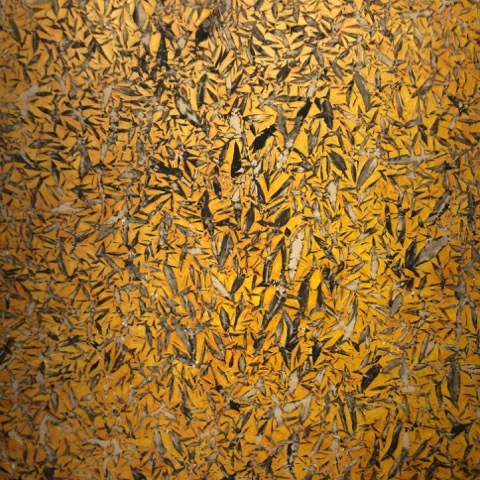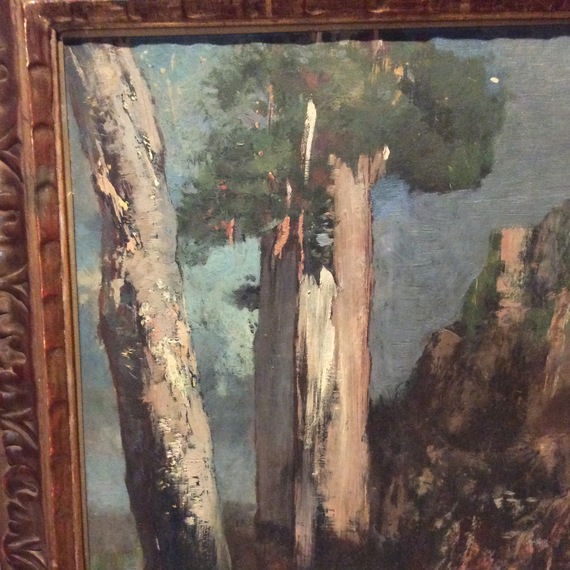At this, the darkest moment of the year, when the forces of political darkness appear to be entrapping the last fragments of civil expression in ever-tightening cyber cages, what can an art museum possibly offer but idle distraction?
If you're lucky enough to pass through the temperate clime of Bordeaux, do not fail to drop into the CAPC, the city's museum of contemporary art, an entrepot that once housed tons of African coffee beans alongside legions of African slaves chained to its walls as they waited to be shipped on to wealthy slave owners in Louisiana, Haiti, Mississippi and the rest of Dixie, where today those slave owners descendants are prepping to reinstitute functional segregation under the direction of Donald Trump's emerging oligarchy.
Yes, all that's a lot to swallow in a single museum breath, and yet the last 30 years of the CAPC's collections, much of it now on display curated by an American, take us in and out and through these cages of visual memory. Curator José Luis Blondet, normally at the Los Angeles Museum of Contemporary Art, has chosen not merely to display the works chronologically, but to use the building's spaces to encapsulate us in time and visual experience. One of the most startling spaces starts at the beginning where a polychrome painting of colored netting by Claude Viallat that might be a ship's rigging plays off against another sort of netting: Ed Ruscha's 30-year black and white documentation of grim, empty LA parking lots. Entrapped as we all feel in the one, we climb toward air and light of the other.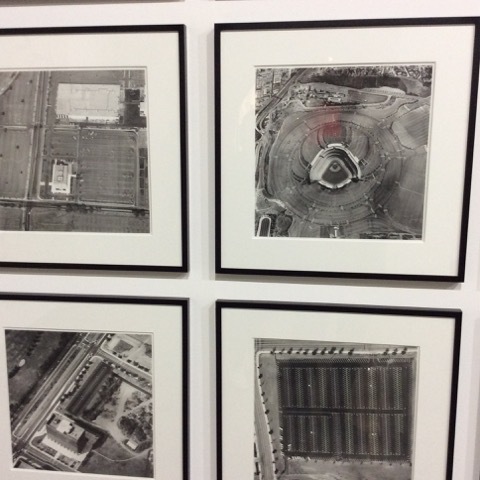
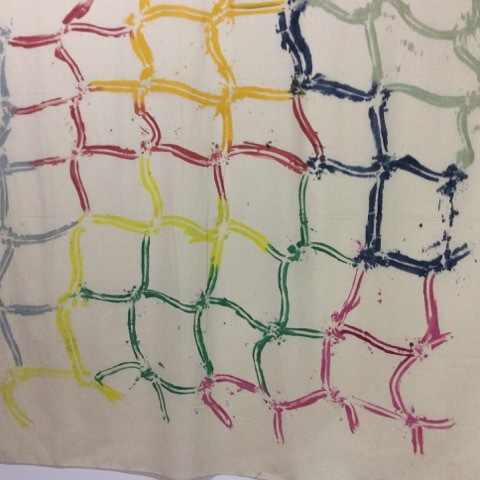
Many of the pieces in the CAPC storerooms are installations that change from one presentation to the next, as in a disarmingly simple pyramid of shiny iridescent pieces of broken coal set on a flat white base. The same "monument" of course reads profoundly differently today than it did half a century ago as coal (outside of China and the U.S.) is a disappearing fossil rock--no matter the phony promise by the falsely elected new American president who continues to lie to his desperate supporters that he will reopen the their abandoned coal mines.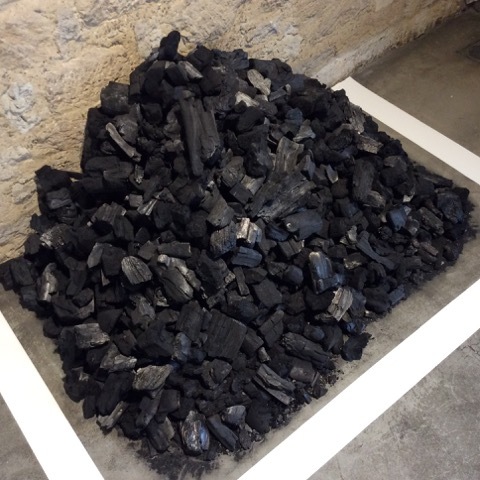
Two rooms away from the pile of coal, a series of rolled up art works by the late Iranian artist Chohreh Feyzdjou fill a quiet corner. Within the rolls, that certainly recall Egyptian papyrus scrolls, are her prints and drawings, now forever sealed and labeled in dark waxes, calling us to wonder what buried images and imagination rest closed inside.
Far more playful is a multi-colored half swing and series of painted ceramic shower stalls by Canadian Jessica Stockholder, proposing that we wander into a dreamlike memory-sculpture of toys past and not yet found.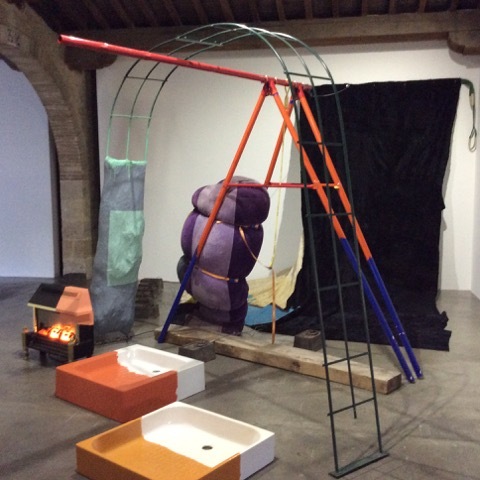
And there is Simon Hantaï's hypnotic painting of leaves transmuting themselves into birds (see image at top), or are they fingers or possibly blind eyes: elements that float into and out of a sun-blinding yellow background, which altogether take us to the edge of seductive vertigo, a color zone into which inside and out play back and forth, again proposing that the fixed realities we trust in everyday life are not likely fixed at all, or in current cynical discourse, that "facts" are in themselves only the floating creations of their makers, nuggets of experience that we each use all the time to create a reality of our own willing.
At last, having passed numerous other fantasy stalls, we come to Annette Messager's forest of hanging female entrails: pink, black, spotted pieces of female being, sources of life, objects of misogynic derision, caressable and subject to butchery and display.
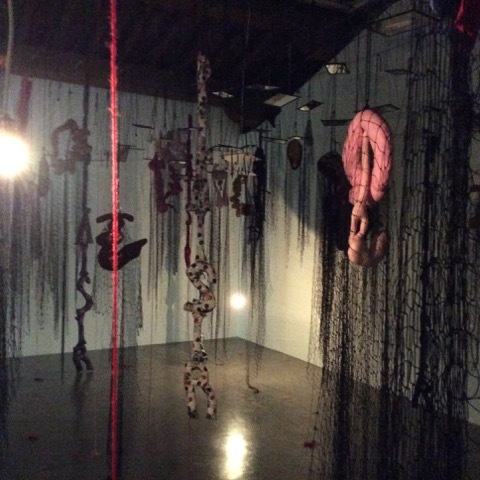
These, altogether, are as Messager suggests in her own title (Plaisir/Déplaisir) the moments and memories of pleasure and misery on which women's lives--and the lives of those close to women--are constructed.
Each of these installations, transcendent or ghastly, takes us into the zones of contemporary art that with luck help us come to terms with the physical and emotional universe in which we have been captured.
Barren Trees of Hope. Down the road about a mile from the contemporary art museum is the elegant--and rather stuffier--Fine Arts Museum, which right now is presenting another sort of retrospective of a painter little known outside France, Odilon Redon. Mostly known for his mystic Christian portraits, most of these paintings presented under the rubric Silent Nature: Landscapes, speak to another sort of mystic sensibility.
Most notable are the roots, vines and trees grown old and leafless as the march of 19th century urban industrialism stripped more and more land of its majestic trees, and the coastal prairies find themselves in a bare ballet with roaming clouds.
--All photos by Frank Browning

